Search Images
Browse Content (p. 1658)
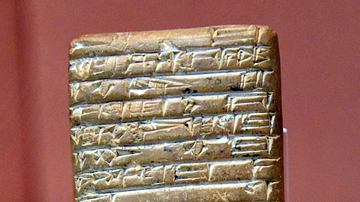
Image
Letter from Ishkun-Dagan
The cuneiform inscriptions (in the old Akkadian language) on this clay tablet mention "Gutians" as invaders of the Akkadian Empire. The tablet was donated to the British Museum by Dr. N. Corkill in 1930 CE. The site and date of excavation...

Image
Tablet with Survey of Barley Yields
This clay tablet mentions a survey of eleven fields with their dimensions and barley yields. Neo-Sumerian period, 2039 BCE, year eight in the reign of King Amar-Suen of Ur. From Mesopotamian, Iraq. (The British Museum, London).

Image
Male Torso Sculpture from Sippar
A male torso from a stone votive statue. From Sippar, 2100-1900 BCE. (The British Museum, London).
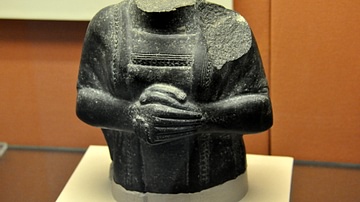
Image
A Votive Statue of a Female Torso
This is a fragment of a female votive statue and was carved from diorite. The site and date of excavation are unknown. This piece was purchased from Captain H. V. Cowley in 1896 CE. Neo-Sumerian period, Ur III, 2100-2000 BCE. From Mesopotamia...
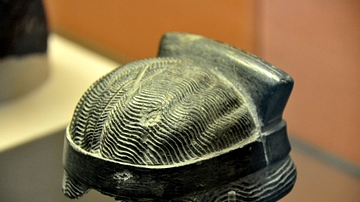
Image
Stone Hair and Headdress of the God Lamma
On the back of this piece, there are cuneiform inscriptions that mention that this headdress was commissioned by a Bau-Ninam on behalf of King Shulgi of Ur. It is most likely that this headdress was to be put on the god Lamma. Neo-Sumerian...
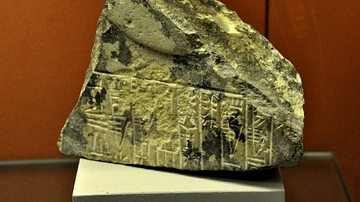
Image
Utu-Hegal's Stone Monument
The cuneiform inscriptions on this fragment of a stone monument mention the name of Utu-Hegal, King of Uruk. 2125 BCE, from Ur, Mesopotamia, Iraq.
The British Museum, London.
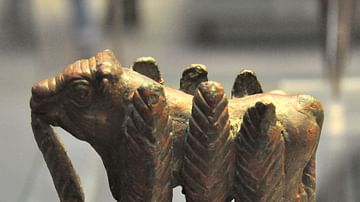
Image
A Foundation Peg from the Temple of Nanshe
This copper alloy foundation deposit records the rebuilding of the temple of the god Nanshe in the city of Sirara (modern Zerghul, southern Iraq) by Gudea, ruler of Lagash. It features a bull in a reed marsh. C. 2130 BCE, probably from Sirara...

Image
A Stone Bowl with Two Inscriptions
This stone bowl has two sets of cuneiform inscriptions. The first one says that the bowl was booty brought to Mesopotamia from Magan (modern Sultanate of Oman) by the Akkadian king Naram-Sin (2254-2218 BCE). The second inscription mentions...
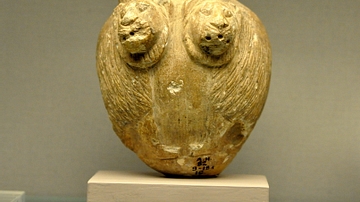
Image
A Stone Mace Head with Lions
This is a symbolic weapon which was dedicated to a temple in order to receive gods' blessings. The lions' heads represent power and reflect the fact the donor was a royal person. Early dynastic period, 2500 BCE, from Sippar, Mesopotamia...
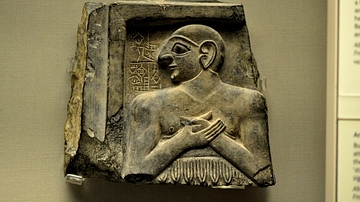
Image
King Enannatum I of Lagash
The inscriptions on this stone plaque mention the name of Enannatum I, king (or ruler) of Lagash. The plaque was fixed to a wall of a shrine or temple. The king's hands are folded in a worship position. c. 2420 BCE, from Girsu (modern Tell...